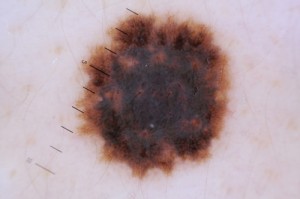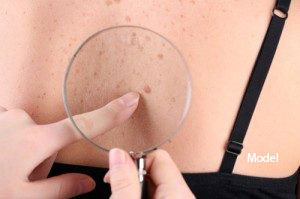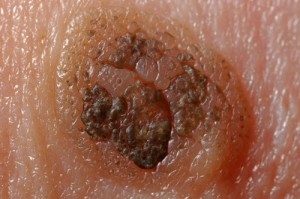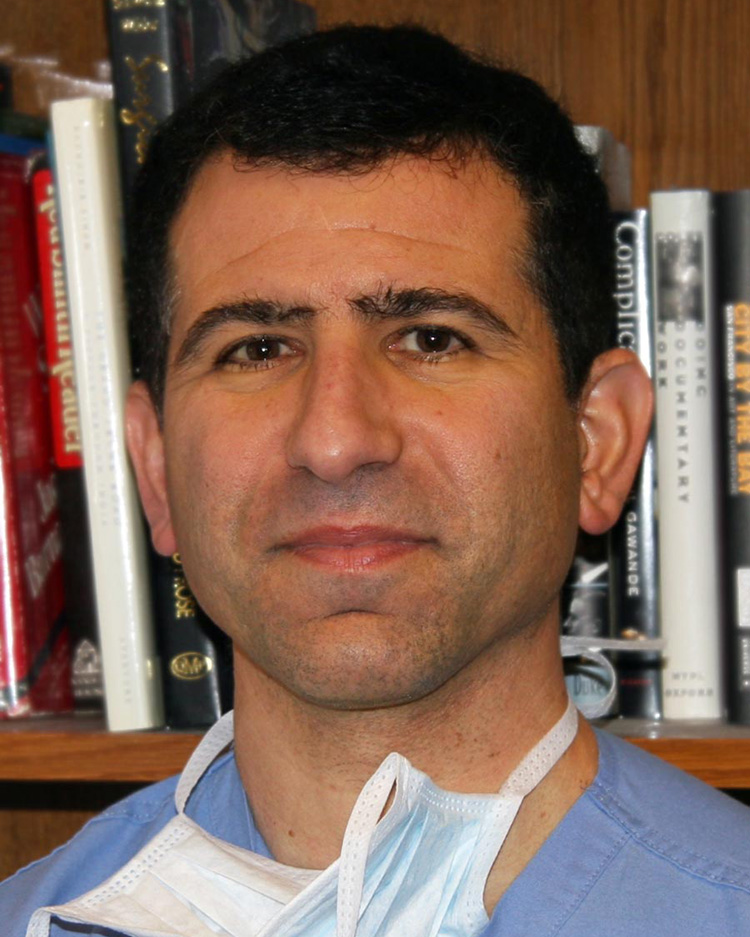Skin Cancer Screening
Prevention and early detection is an essential part in reducing the chances of having Skin Cancer.
1 in 5 Americans will have a non-melanoma skin cancer in their lifetime
Skin Cancer is the most common form of cancer. Over the past several decades, it has risen dramatically in the United States. Much of this increase can be attributed to sun exposure. Therefore, skin cancer tends to occur in sun-exposed areas such as the face and the back of the hands. Individuals of a lighter skin tone are at a greater risk for skin cancer, because they do not have as much pigment in their skin, which protects against the sun. Because we currently believe that both cumulative damage over decades and sunburns can eventually lead to skin cancer, it is important to protect your children from the sun. This does not mean preventing them from going outdoors; it is healthy for children to be outdoors and exercise.

However, it does mean applying sunscreen or sun block, or having them wear protective clothing. If your children are out in the sun all day, it is necessary to reapply the sunscreen or sunblock. This is also important for adults. It is never too late to begin to practice sun protection. By protecting yourself from the sun, you will not only lower your risk for skin cancer, but will also keep your skin—which is the body’s largest organ—healthier and reduce the amount of wrinkles.
Because skin cancer is curable, it is important to catch it early. This is particularly true for melanoma which is the most aggressive of the common skin cancers (basal cell carcinoma and squamous cell carcinoma being the other two). You should examine your skin on a monthly basis. In areas such as the back which is difficult to examine, have someone else look carefully. Any nonhealing sore, or a spot that bleeds, or continually scabs up, or is getting larger, or changing colors should be looked at by Dr Gladstone.
Regular Skin Checks
It is important to have a yearly check-up by a dermatologist who is trained to look for skin cancers. Dr Gladstone is a Board Certified Dermatologist who specializes in skin cancer, Many people have actinic keratoses, which are scaly red spots that feel like sandpaper to the touch. These can eventually turn into skin cancer. We may freeze these spots with a cold spray. The area will turn red, and possibly create a water blister. After it has healed, the red scaly spot, in most cases, will have disappeared. Should you have a nonhealing spot, Dr Gladstone may elect to take a skin sample. This usually takes a few minutes, and after numbing the area, the skin is shaved off, or a piece is taken with a cookie cutter device known as a “punch.” In this later case, you may require a stitch. The piece of skin is then processed and read under the microscope. Skin cancers have distinct patterns under the microscope. To diagnose a skin cancer in this manner may take several days.
Skin Cancer: Frequently Asked Questions
What are the types of Skin Cancer?
 The most common types of skin cancer are basal cell carcinoma, squamous cell carcinoma and melanoma. Basal cell carcinoma and squamous cell carcinoma can initially appear as little irritations or pimples. However, they become larger, don’t go away, may scab and bleed. Melanoma usually will appear as an irregularly shaped, dark brown (there may also be red) spot at least the size of the tip of a pencil eraser. There are less common skin cancers such as Dermatofibroma Sarcoma Protuberans (DFSP); Merkel Cell Carcinoma; Sebaceous Carcinoma as well as several other skin cancers.
The most common types of skin cancer are basal cell carcinoma, squamous cell carcinoma and melanoma. Basal cell carcinoma and squamous cell carcinoma can initially appear as little irritations or pimples. However, they become larger, don’t go away, may scab and bleed. Melanoma usually will appear as an irregularly shaped, dark brown (there may also be red) spot at least the size of the tip of a pencil eraser. There are less common skin cancers such as Dermatofibroma Sarcoma Protuberans (DFSP); Merkel Cell Carcinoma; Sebaceous Carcinoma as well as several other skin cancers.
How common is Skin Cancer?
Basal cell carcinoma is the most common of the three skin cancers. It occurs in approximately one in five people. Squamous cell carcinoma is less common. There are over 1 million new cases per year of basal cell carcinoma and squamous cell carcinoma in the United States with squamous cell representing about 10 percent of those patients. Melanoma which has increased more than any other cancer over the past 40 years. While basal cell cancer and squamous cell cancers tend to occur in older individuals—though Dr Gladstone has seen a downward trend in age over the years—melanoma can occur in all age groups.
Where is Skin Cancer found in the body?
Basal cell carcinomas and squamous cell carcinomas are found on sun exposed areas such as the face or the forearms. The most common area on the face is on the nose. However, they may occur on other parts of the body. For melanoma, the most common site in men is on the trunk—the chest and back. For women, it is the back of the legs.
Which Skin Cancers can spread to other parts of the body?
 Melanoma, if not caught early, can spread to other parts of the body such as the brain or liver, and can be deadly. Squamous cell cancer of the skin can spread to other parts of the body, though it is less of a risk than melanoma. Basal cell carcinoma rarely spreads to other parts of the body.
Melanoma, if not caught early, can spread to other parts of the body such as the brain or liver, and can be deadly. Squamous cell cancer of the skin can spread to other parts of the body, though it is less of a risk than melanoma. Basal cell carcinoma rarely spreads to other parts of the body.
What are the risk factors for Skin Cancer?
There are many. However, the main ones are sun exposure, skin complexion and genetics (some people are just be more susceptible.). For basal cell carcinoma and squamous cell carcinoma, it is believed that chronic sun exposure over decades plays a major role in causing it. For individuals who have had organ transplants and are on immunosuppressive medications, the risk of squamous cell cancer is much higher. These individuals should have much more frequent skin checks by Dr Gladstone. For melanoma, it is currently thought that acute exposure to sun such as sun burns as a child, may increase the risk of melanoma.
If I have many moles, do I have an increased risk of Melanoma?
If you and other family members have many irregularly shaped and large moles, you may be at an increased risk for melanoma. However, in many instances, melanoma may just arise. For individuals with many irregular moles—known as dysplastic nevi—they should have more frequent skin examinations by Dr Gladstone.
How is Skin Cancer treated?
It depends on the skin cancer and location. Basal cell skin cancer and squamous cell carcinoma can be treated by freezing, scraping and burning, cutting them out, or by radiation. For more superficial skin cancers, a there are chemo and immunotherapy creams that can be effective. For very advanced basal cell carcinoma, an oral medication may be effective.
For nonmelanoma skin cancer, the current gold standard is mohs surgery. It has a long history of having the highest cure rate while removing less skin. Dr Gladstone is a fellowship trained mohs and reconstructive surgeon. Superficial radiation and electronic brachytherapy are promising alternatives which do not involve surgery. However, there is not long term data for this new high tech office based therapy.
If I have had Skin Cancer before, what are the chances that I will have another?
Statistically, you have a 50% higher risk over the next five years of having another skin cancer. You should then have a skin check at least every 6 months by Dr Gladstone.
How can I prevent Skin Cancer?
The best way is to wear protective clothing such as broad brimmed hats when outside. Use sun block or sun screen on exposed areas.Dr Gladstone also was an investigator in a study that showed that applying topical Retin A could potentially prevent skin cancers.
Does the SPF matter?
Yes, it does. However, more important than the SPF is to determine whether the product has titanium dioxide or zinc oxide. (which physically blocks the sun)) orParsol 1789 (which protects against both UVA & B sun rays.) It is also important to reapply the sun block or sunscreen, if you are outside for many hours.Dr Gladstone prefers physical blockers that have broader UV protection and do not interact with the skin.
What is a Skin Cancer examination?
A skin cancer screening involves checking your skin for signs of cancer. In many cases, a thorough visual inspection is sufficient for a diagnosis. Signs of a nonmelanoma skin cancer may be scabbing or bleeding, or an abnormal appearing mole. If there are precancers, Dr. Gladstone may treat them with liquid nitrogen also known as “freezing” them. Other times, a biopsy or skin sample could be required. Dr. Gladstone tries to perform the biopsy as painlessly as possible, and, generally, there shouldn’t be any downtime.
What are the benefits of Skin Cancer screening?

Early detection is the key to beating skin cancer. Screenings can help you identify instances of skin cancer so that you can reduce the chance that it may spread.
Many people are worried to discover an unusual growth, and rightfully so. Undergoing skin cancer screening can provide these individuals with the peace of mind that comes from knowing they truly are cancer-free.
Who is a candidate for Skin Cancer screening?
If you have an unusual lesion, one that is bleeding or scabbing, or just “comes and goes,” a suspicious or changing mole, or a family history of skin cancer, you should come in for a skin cancer check.
What do I need to do before a Skin Cancer screening?
Bathe your skin as normal, but do not apply any lotion, perfume, or cosmetics. Wear loose, comfortable clothing, leaving any areas of concern exposed whenever possible. For example, if you have an unusual mole on your legs, you may want to wear shorts. However, during a full skin cancer screening, you will be given a gown so that Dr. Gladstone can thoroughly examine your skin.
How long does it take to perform a Skin Cancer screening?
Generally, a skin cancer screening takes 15-20 minutes.
What can I expect after a Skin Cancer screening?
Following a visual screening, Dr. Gladstone will discuss his findings with you and then recommend a course of action. If you have had a biopsy performed, the sample will be sent to the laboratory, and you will be informed as to the results within a week or so. You can go back to any activities, immediately.
Will I have scars after getting a Skin Cancer screening?
Liquid nitrogen may leave a temporary red mark that will go away in a few days. In rare cases, there could be a whitish spot. Dr. Gladstone takes the minimal amount of skin for biopsies required for diagnosis. However, biopsies can sometimes leave small scars or marks.
How often should I come in for a Skin Cancer screening?
Just because you have tested negative for skin cancer does not mean you cannot develop it later. For most adults, an annual skin screening suffices. However, for patients with a history of skin cancer or at high risk for skin cancers, you may need to come more than once per year in order to prevent skin cancers or at least catch them in their early phase.
Does insurance cover Skin Cancer examinations?
Yes, insurance covers skin cancer examinations. Depending on your insurance, you may have a co-pay and deductible for which you are responsible. The Gladstone take Medicare and most PPO insurances. The Gladstone Clinic is accepting new patients.
Put your mind at ease with early screening for any skin lesion that you suspect might be dangerous or you are worried about. The Gladstone Clinic led by Dr. Hayes B. Gladstone, MD provides comprehensive screening, surgery, and treatment for skin cancer for residents of Danville Blackhawk, Pleasanton, Manteca, San Francisco, and the surrounding communities in California. Please contact us today to schedule a skin cancer screening.
*Individual results may vary.



